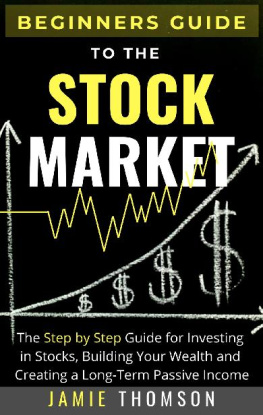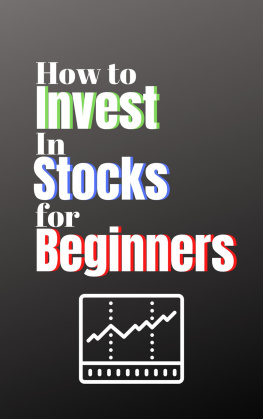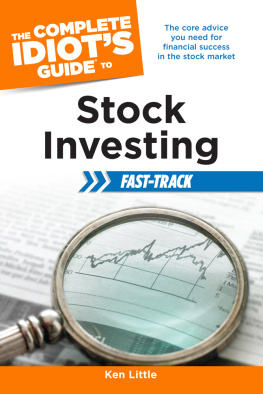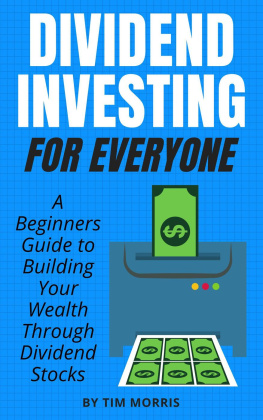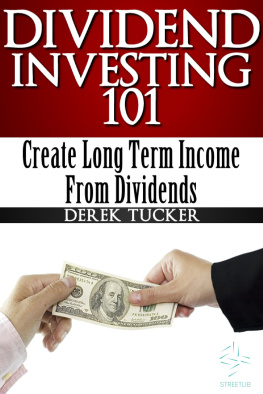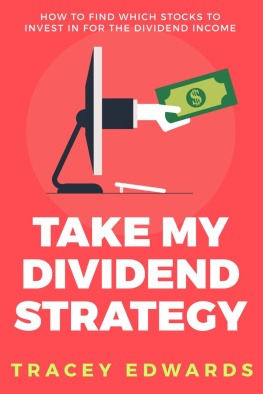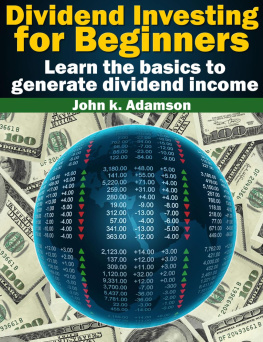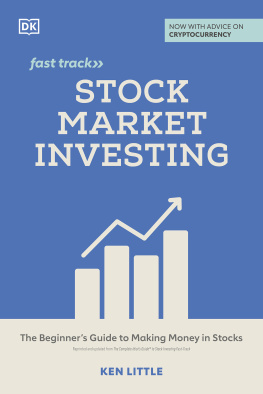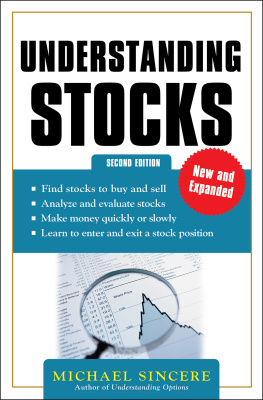Mark Zuckerman - Stock Market Investing Bible: Step-By-Step Beginners Guide To Invest In S&P 500 Growth Stocks, Nft Stocks, Dividend Stocks, Reit-S, Options, Bonds, Etf-S And Index Funds 6 Books In 1
Here you can read online Mark Zuckerman - Stock Market Investing Bible: Step-By-Step Beginners Guide To Invest In S&P 500 Growth Stocks, Nft Stocks, Dividend Stocks, Reit-S, Options, Bonds, Etf-S And Index Funds 6 Books In 1 full text of the book (entire story) in english for free. Download pdf and epub, get meaning, cover and reviews about this ebook. genre: Business. Description of the work, (preface) as well as reviews are available. Best literature library LitArk.com created for fans of good reading and offers a wide selection of genres:
Romance novel
Science fiction
Adventure
Detective
Science
History
Home and family
Prose
Art
Politics
Computer
Non-fiction
Religion
Business
Children
Humor
Choose a favorite category and find really read worthwhile books. Enjoy immersion in the world of imagination, feel the emotions of the characters or learn something new for yourself, make an fascinating discovery.
- Book:Stock Market Investing Bible: Step-By-Step Beginners Guide To Invest In S&P 500 Growth Stocks, Nft Stocks, Dividend Stocks, Reit-S, Options, Bonds, Etf-S And Index Funds 6 Books In 1
- Author:
- Genre:
- Rating:5 / 5
- Favourites:Add to favourites
- Your mark:
Stock Market Investing Bible: Step-By-Step Beginners Guide To Invest In S&P 500 Growth Stocks, Nft Stocks, Dividend Stocks, Reit-S, Options, Bonds, Etf-S And Index Funds 6 Books In 1: summary, description and annotation
We offer to read an annotation, description, summary or preface (depends on what the author of the book "Stock Market Investing Bible: Step-By-Step Beginners Guide To Invest In S&P 500 Growth Stocks, Nft Stocks, Dividend Stocks, Reit-S, Options, Bonds, Etf-S And Index Funds 6 Books In 1" wrote himself). If you haven't found the necessary information about the book — write in the comments, we will try to find it.
- BOOK 1 - HOW TO INVEST IN STOCKS AND INDEX FUNDS
- BOOK 2 - HOW TO OUTPERFORM THE STOCK MARKET
- BOOK 3 - INVESTING GUIDE TO DIVIDEND STOCKS, OPTIONS, BONDS, AND INDEX FUNDS
- BOOK 4 - 15 BEST LONG TERM TECH STOCKS TO BUY
- BOOK 5 - 17 BEST LONG TERM CHINESE TECH AND S&P 500 STOCKS TO BUY
- BOOK 6 - 45 GROWTH STOCKS WITH LONG TERM POTENTIAL
- 15 core principles of investing you must know before entering the stock market
- How the stock market works, including shares and IPO-s step by step
- What is the 90/90/90 rule and how to get rich in the stock market
- How to Setup a $1 Million Dollar Roth IRA
- How to Invest Successfully in a lazy Way
- 3 easiest ways to earn and save Money
- What are the top Financial Skills you must have
- What you should do If your Stock Drops by 20 or 30%
- How to outperform the market by investing in small cap companies
- How to invest in Index Funds and ETF-s on Vanguard
- What are bonds, how do they work and when to invest in bonds
- How to identify and invest in both growth stocks and blue chip stocks
- What are mutual funds, how you start to invest in mutual funds
- What are Penny Stocks and what are the pros and cons of Penny Stocks
BOOK 3 COVERS:
- What are the top 10 dividend stocks to invest in 2021
- How you can invest like Warren Buffett
- Shot selling basics and how to short sell a Stock
- Options Trading basics and what are call and put Options
- What is day trading and how to day trade stocks
- What the Best 3 Investing Apps for US Residents
- What the Best 3 Investing Apps for Non-US Residents
BOOK 4 COVERS:
- NVIDIA Stock Analysis and Valuation
- Alphabet AKA Google Stock Analysis and Valuation
- Tesla Stock Analysis and Valuation
- Facebook Fundamental Analysis
- Amazon Fundamental Analysis and Stock Valuation
- Cloudflare Cybersecurity Stock Analysis
- Alibaba Stock Analysis & Price Prediction
- Zoom Stock Analysis & Price Forecast
- Pinterest Stock Analysis and Valuation
- Netflix Stock Analysis & Price Prediction
- Airbnb Stock Analysis and Valuation
- UBER Stock Analysis and Valuation
- Apple Stock Analysis and Valuation
- Intel Stock Analysis and Valuation
BOOK 5 COVERS:
- JD Stock Analysis & Price Prediction
- Coinbase Stock Analysis
- Volkswagen Group Stock Analysis
- Johnson & Johnson Stock Analysis
- Unity Software Stock Analysis
- Disney Stock Analysis
- Palantir Stock Analysis
- HUYA Stock Analysis
- Inmode Stock Analysis
- 10x Genomics Stock Analysis
- Plug Power Stock Analysis
- Docusign Stock Analysis
- Square Stock Analysis
- ROKU Stock Analysis
- MindMed Stock Analysis
- NIO Stock Analysis
- CrowdStrike Stock Analysis
- Stock Market Crash Strategy
- Strategies for High Stock Valuations
BOOK 6 COVERS:
- TOP 5 TECH STOCKS
- TOP 5 STOCKS FOR THE NEXT 5 YEARS
- TOP 5 STOCKS TO BUY FOR LONG TERM RETURNS
- TOP 3 STOCKS UNDER $5
- TESLA STOCK ANALYSIS & FAIR VALUE
- TOP 5 STOCKS FOR DOUBLE DIGIT RETURNS
- 7 DIVIDEND STOCKS TO PAY YOUR RENT
- TOP 5 HEALTH CARE STOCKS
- TOP 5 NFT STOCKS
- HOW TO USE TAX-EFFICIENT FUND PLACEMENT
- TOP 5 IT INDEX FUNDS
- TOP 4 EMERGING MARKET ETFS
- TOP 5 CLEAN ENERGY ETF
- TOP 5 CRYPTO MINING STOCKS
- BEST 5 REIT INDEX FUNDS & ETFS
- TOP 7 PENNY STOCKS FOR COMMODITIES
Mark Zuckerman: author's other books
Who wrote Stock Market Investing Bible: Step-By-Step Beginners Guide To Invest In S&P 500 Growth Stocks, Nft Stocks, Dividend Stocks, Reit-S, Options, Bonds, Etf-S And Index Funds 6 Books In 1? Find out the surname, the name of the author of the book and a list of all author's works by series.




